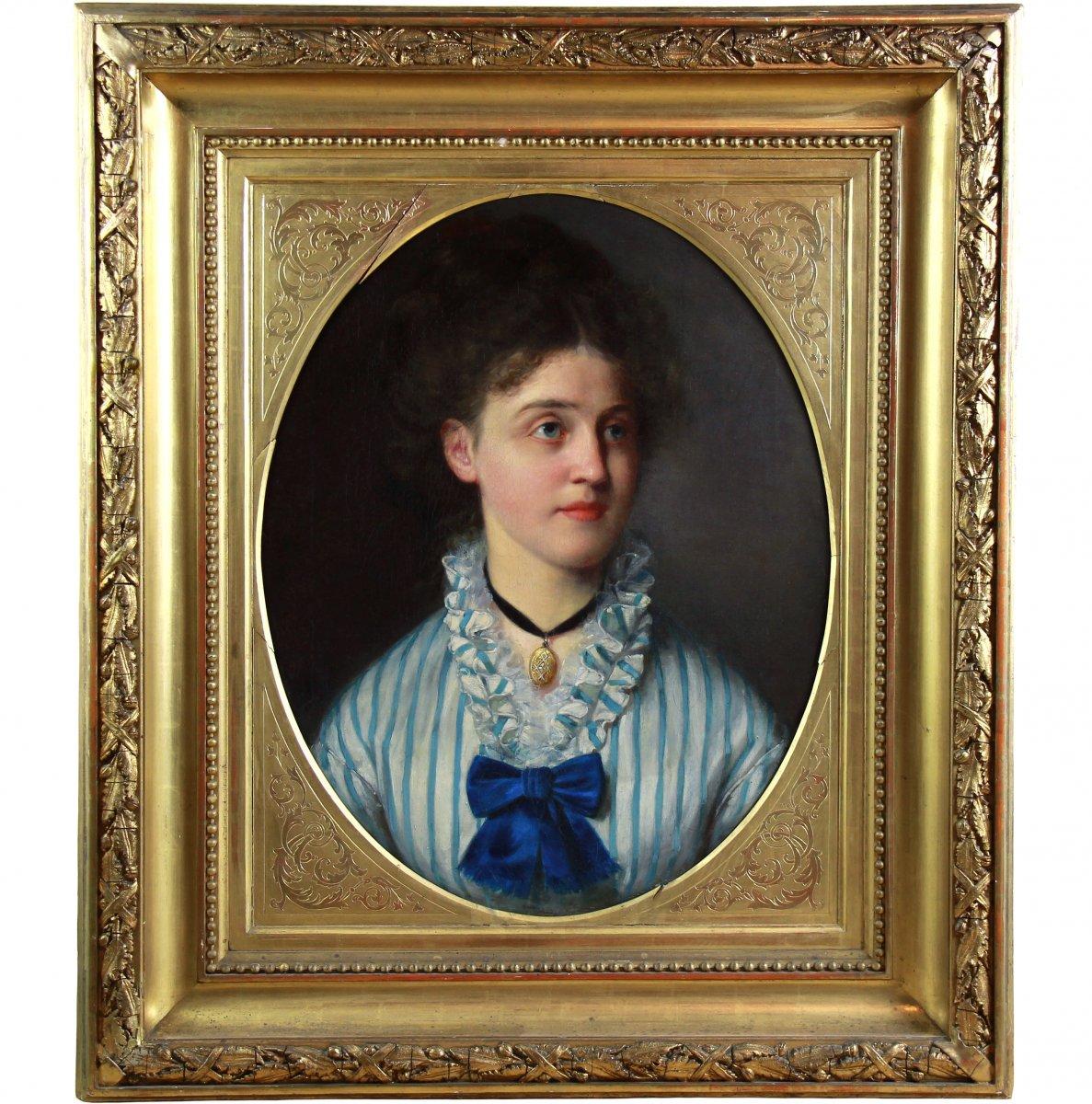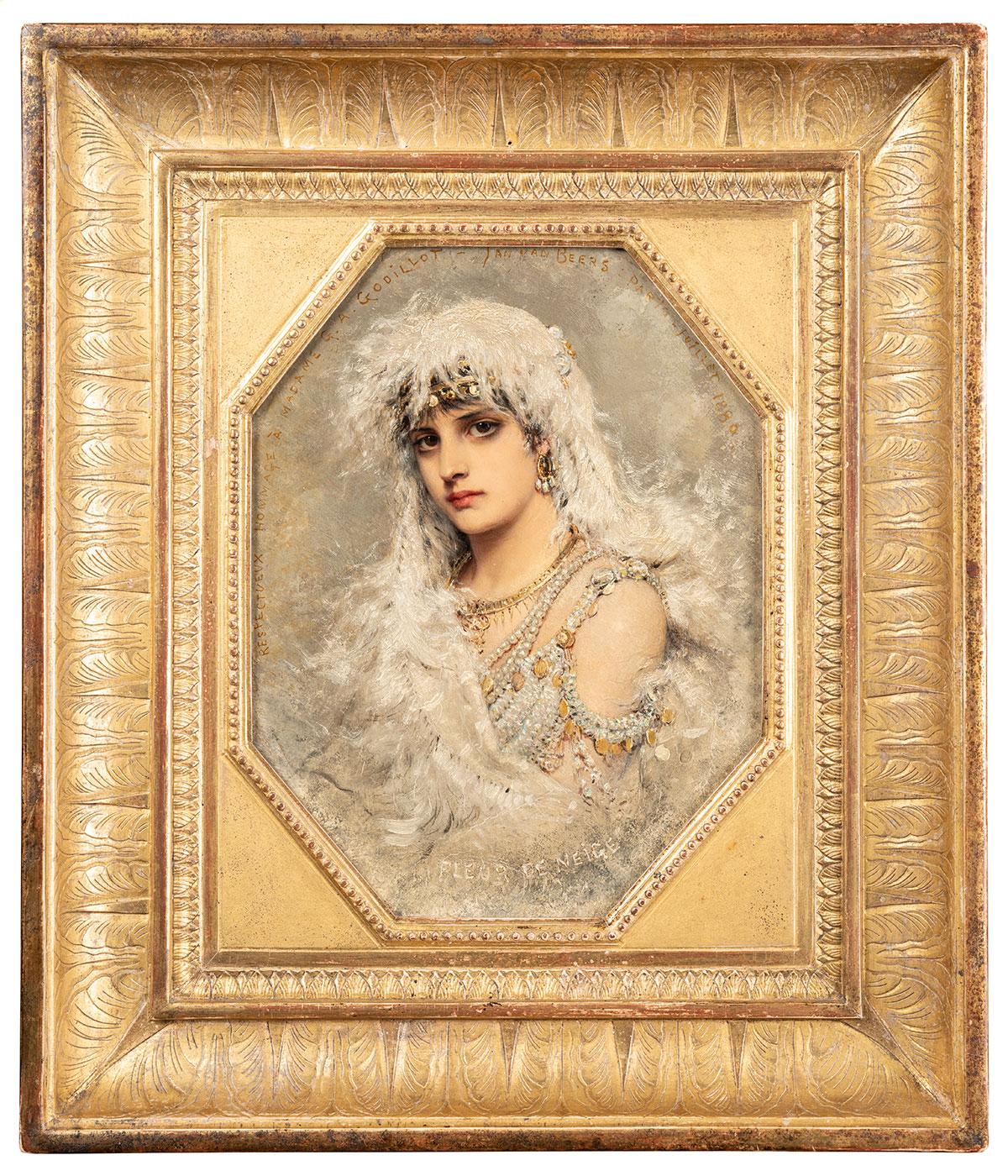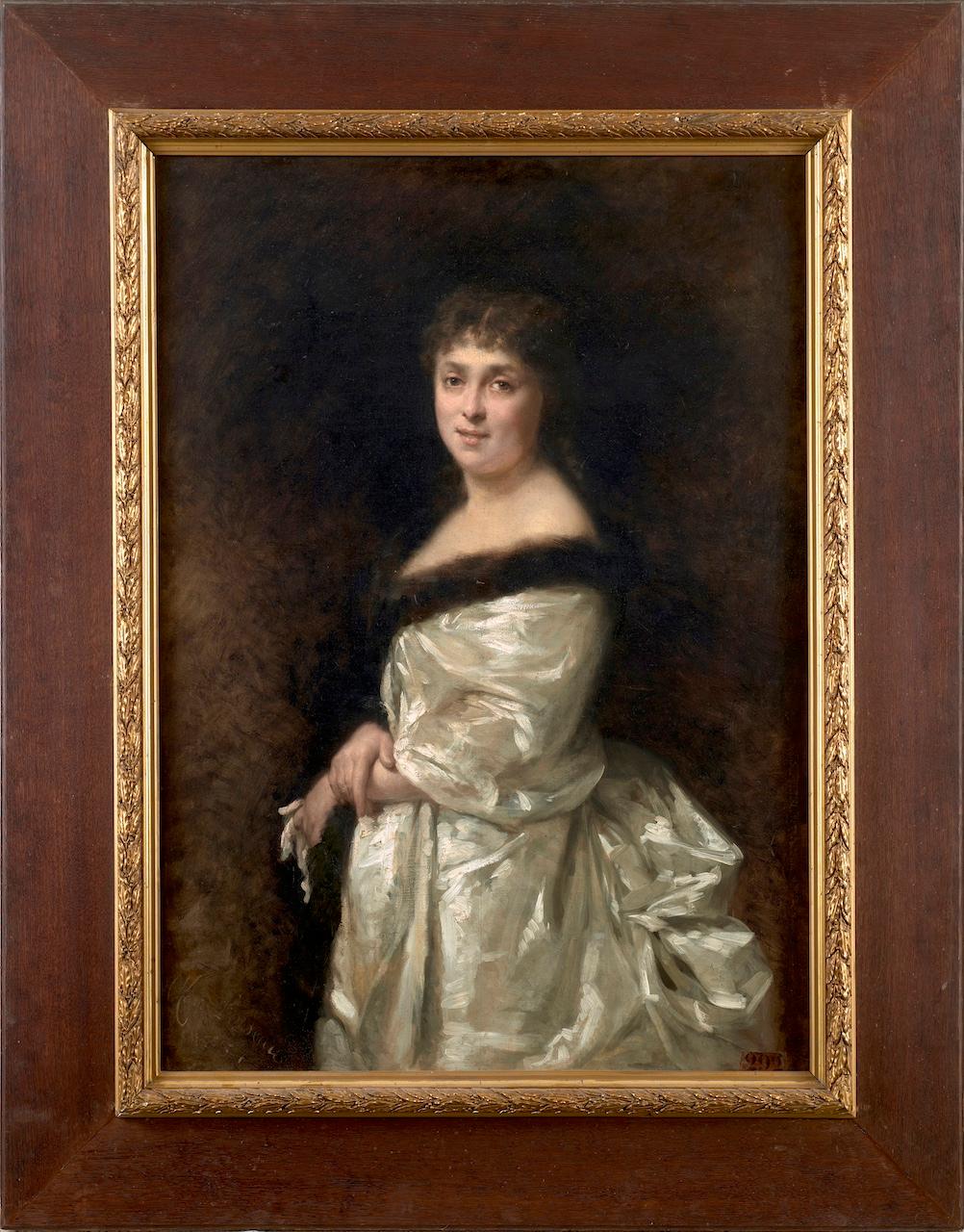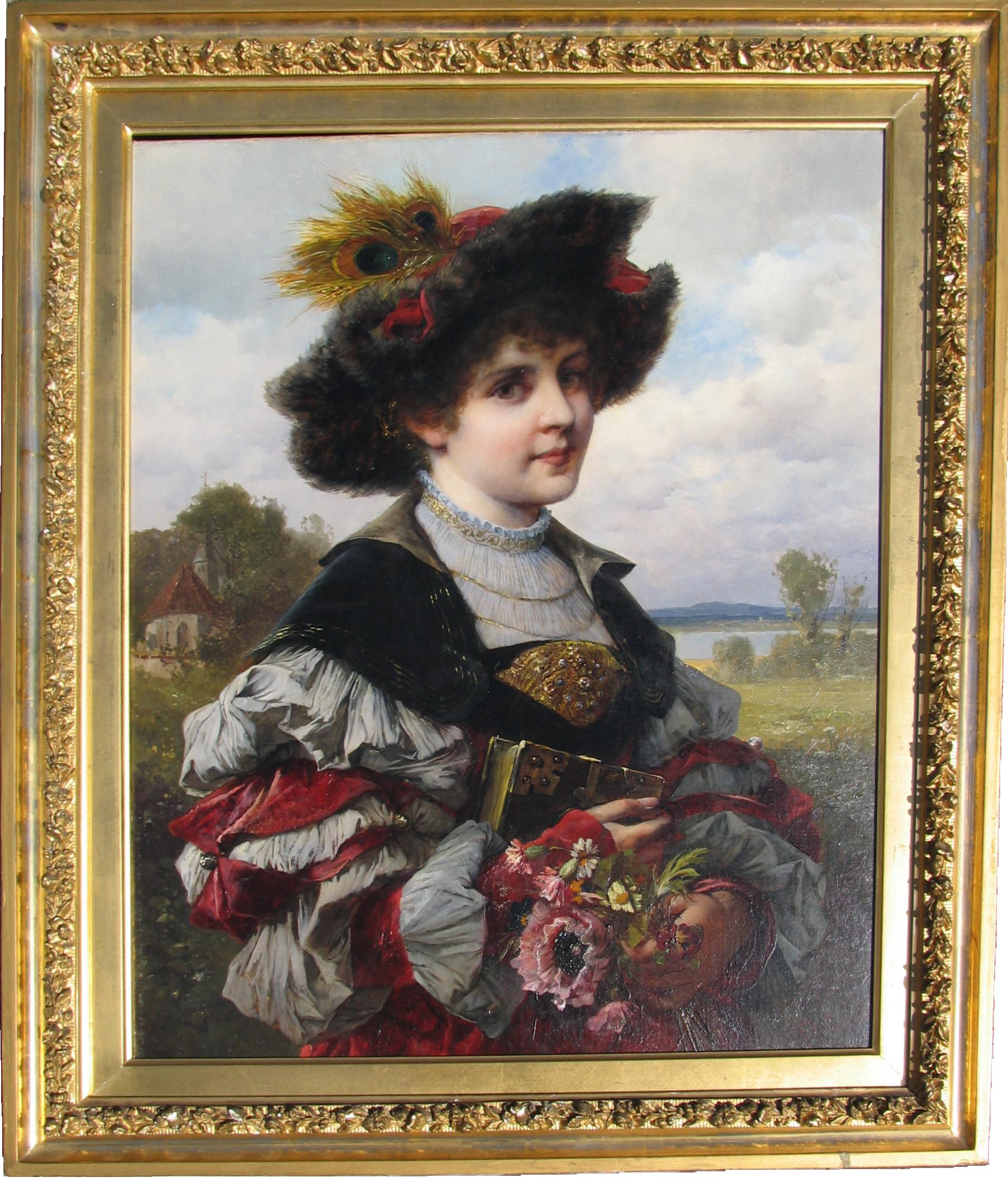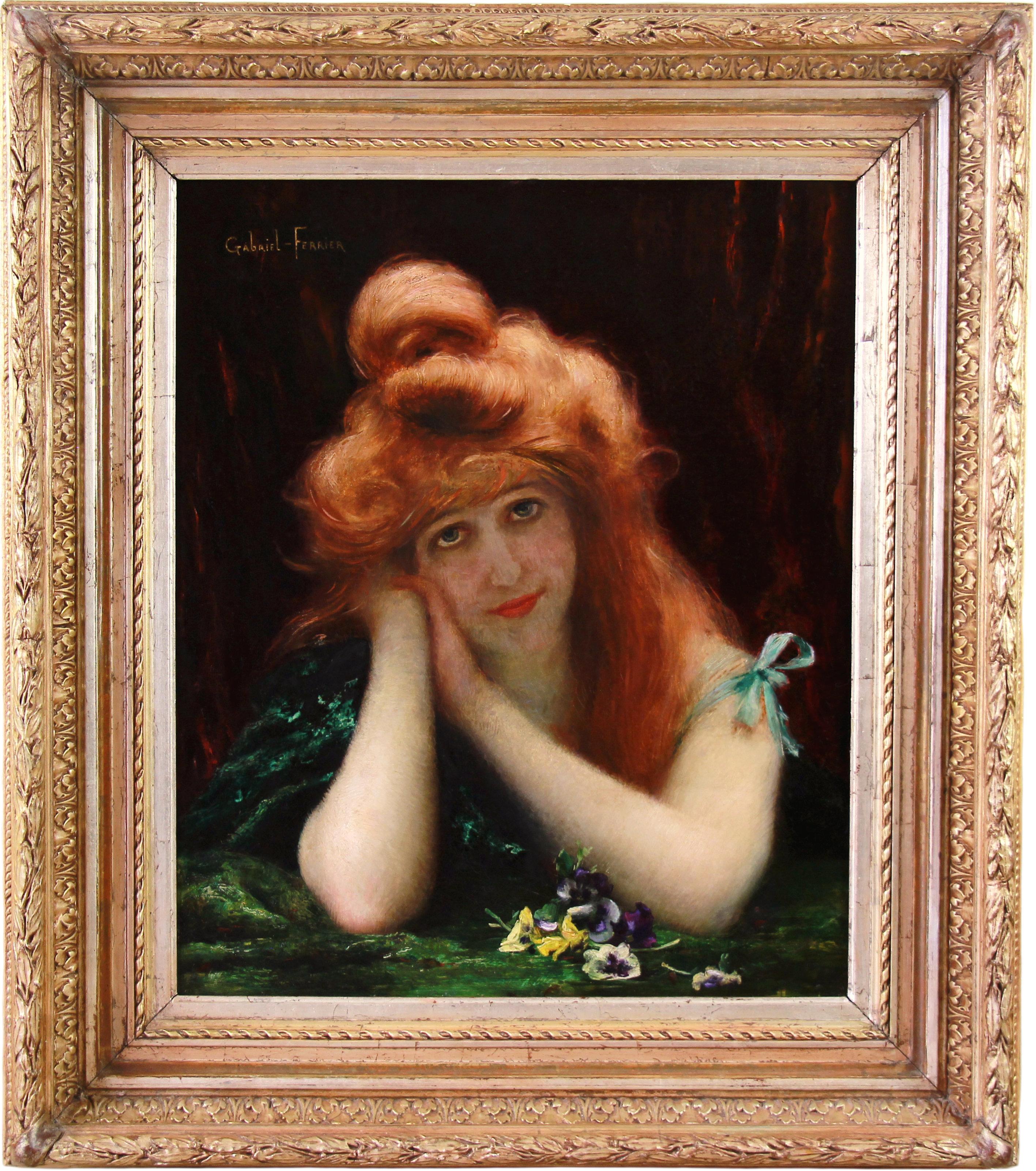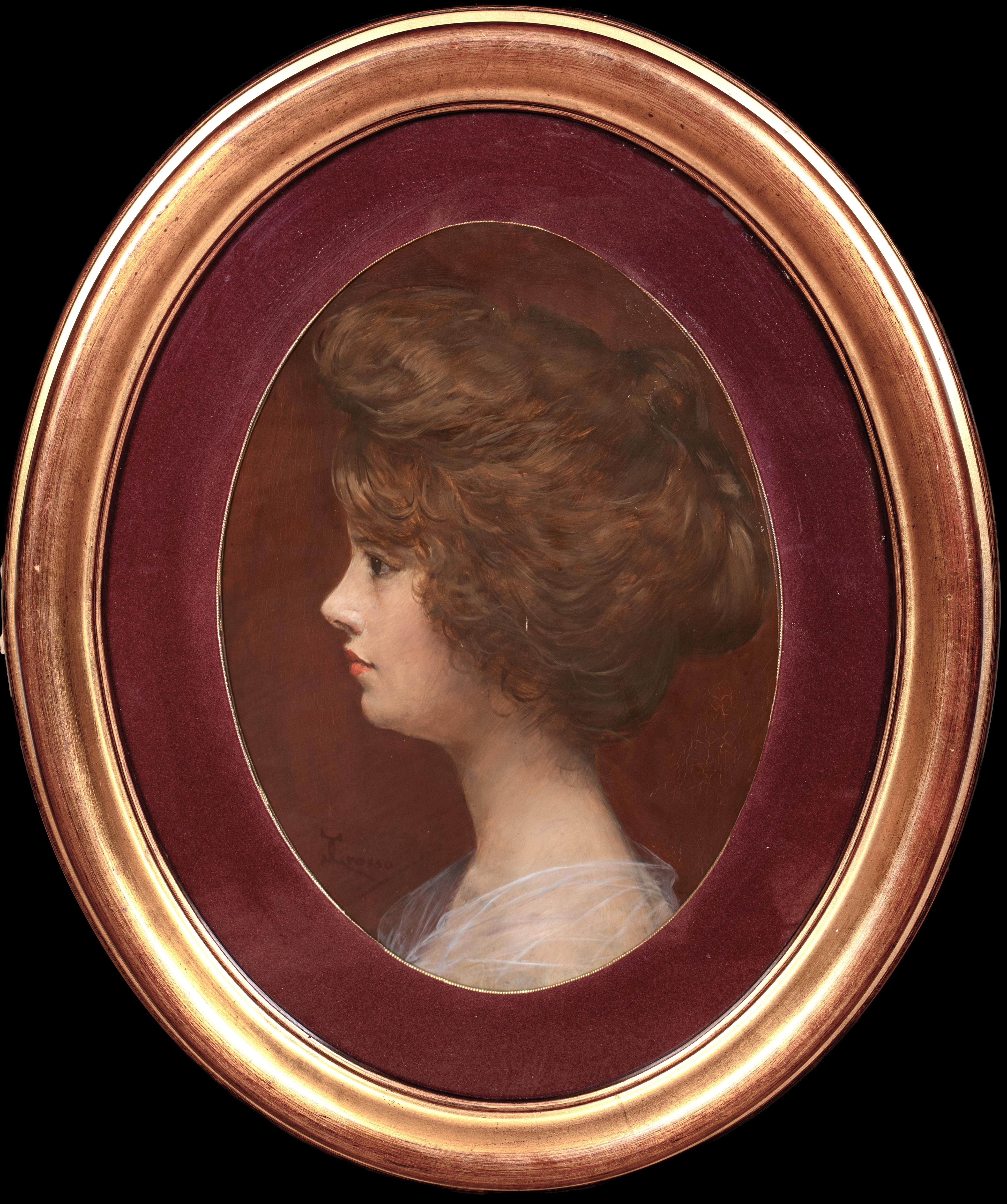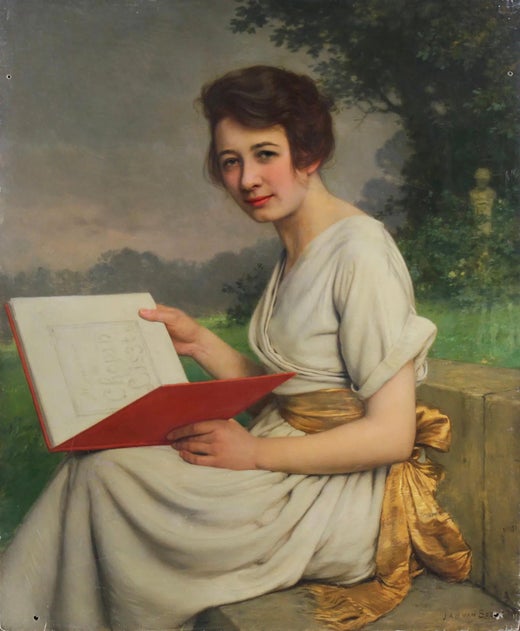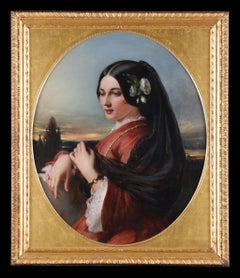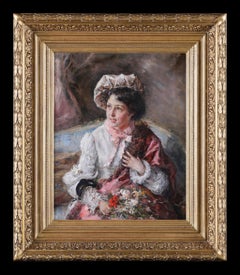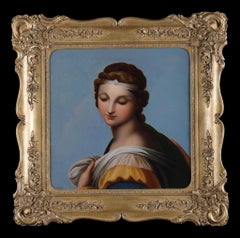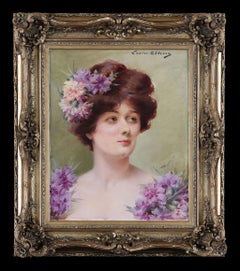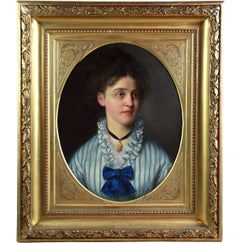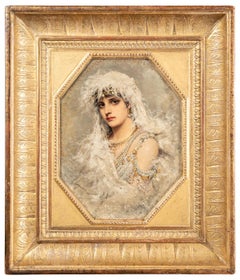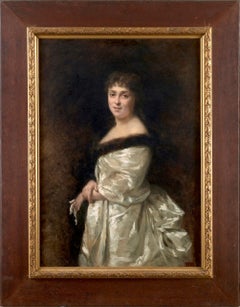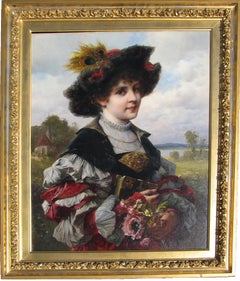Items Similar to The Beautiful Maiden
Want more images or videos?
Request additional images or videos from the seller
1 of 10
Jan Van BeersThe Beautiful Maiden1875
1875
$14,475.42
£10,500
€12,261.33
CA$20,014.84
A$21,973.80
CHF 11,463.78
MX$265,913.58
NOK 143,680.67
SEK 135,384.97
DKK 91,527.56
About the Item
Jean Marie Constantin Joseph (Jan) VAN BEERS
Oil on Panel
Panel Size: 32 x 24" (81 x 62cm)
Outside frame Size: 38 x 33" (97 x 83cm)
Van Beers (1852 - 1927) studied at the Royal Academy of Fine Arts in Antwerp. Soon afterwards, he became the leader of a group of young artists, the "Van Beers clique." This group included the artists Piet Verhaert (1852–1908), Alexander Struys (1852–1941), and Jef Lambeaux (1852–1908). They were well known for their mischievous and eccentric behaviour, including walking around Antwerp dressed in historic costumes. These eccentricities aside, several art critics had been emphasizing the technical skills of Van Beers, comparing them to those of the Old Masters. In 1878 Van Beers moved to Paris, and he started to work in the studio of his fellow Belgian painter Alfred Stevens.
In Paris he immediately abandoned historical pictures, producing instead genre and portrait works of the middle classes and developing a successful line in attractive draped young ladies reading a letter or a book or day-dreaming about a lover. His subjects were painted in a highly-finished Naturalist style. He painted very small pictures, delicately brushed, hyper-realistic in their details and extreme finish. Success was almost immediate.
However, at the Brussels Salon of 1881, Van Beers found himself amid a scandal that would upset the Belgian art world and, at the same time, give him instant recognition. He exhibited two paintings at the Brussels Salon of that year, both painted in his new, miniature-like and hyperrealistic style. One of the works, The yacht 'Sirene,' was to become the subject of the turmoil. He was accused to have pushed his realistic style beyond the boundaries of the possible. The Belgian critics Solvay and De Mons suspected him to have painted over a photograph, calling his work a photo-peinture. While the Review L' Art Moderne defended him by suggesting that those were merely echoing comments of some artists who were jealous of Van Beers' commercial success, the scandal nonetheless raised considerable attention.
Van Beers decided to react promptly. He offered to have both his paintings scraped off and checked by experts . If they could discover even the most remote trace of the use of photography, Van Beers would pay them 10 000 francs for Lily, his second exhibition piece, and 20 000 francs for La Sirene, the prices he was asking for them. On the other hand, if they couldn't find anything, the critics were to pay this amount to the Caisse de recours (a pension fund) of the Brussels artists.
The critics refused the challenge, arguing that Van Beers just had to recognize his mistake. Then, on September 3, 1881, during the short absence of the guards at the Salon, an unknown person vandalized the Sirene by scratching off the face of the young woman. Immediately the painting attracted even more attention and crowds of visitors, who wanted to check by themselves if any trace of photography was visible. Van Beers took this opportunity to name a commission to examine the painting. It included the president of the Cercle Artistique et Littéraire of Brussels, the artists Charles Verlat and J.F. Portaels, and two specialists in photography and chemistry. After a thorough examination the commission's report cleared Van Beers of all charges and concluded that he was "an honest man." L'affaire Van Beers" gave him Europe-wide attention. Previously a largely unknown artist, Van Beers was able to use his newfound fame to sell his work for large sums.
Van Beers said that he wanted to paint what he saw and what were the best and most interesting things that one saw in Paris. He explained in an 1893 interview for the Westminster Budget that "all my pictures are from models, and I know where to find them whenever I want them. It requires a good deal of diplomacy to get them to pose. One has to pet and coax them, and even then they often leave you in the lurch."
Vanity Fair showed him with a typical subject in their 1891 caricature titled "The Modern Wiertz" (Antoine Wiertz, 1806–65).
Museum and Gallery Holdings
Amsterdam: Funeral of Charles the Good
Antwerp (Koninklijk Mus. voor Schone Kunsten): Peter Benoit, Director of the Flemish Conservatory in Antwerp (1883, oil on panel); The Painter’s Parents (oil on canvas); Lady in White (oil on panel); Fallen Star (1874, oil on canvas); Henri Rochefort (oil on panel); Jacob van Maerlant on His Deathbed (1879, oil on panel); Maerlant Presiding over the Liberation of Flanders from Breydel and Corninck; William of Jülich; Saeftingen; Emperor Karel as a Child (1879, oil on canvas, triptych)
Boston (MFA): Portrait of a Man (oil on panel)
Brighton (Mus. and AG): Lady of the Directoire (1889, oil on panel)
Brussels (Mus. Royaux des Beaux-Arts): Portrait of Sarah Bernhardt (1888, oil on panel)
Madrid: Peasant Woman from the Ambères Region Milking a Cow
Rouen: Parisian Woman
Washington DC (Nat. Portrait Gal.): Charles Tyson Yerkes (oil on panel)
- Creator:Jan Van Beers (1852 - 1927, Belgian)
- Creation Year:1875
- Dimensions:Height: 38 in (96.52 cm)Width: 33 in (83.82 cm)Depth: 3 in (7.62 cm)
- Medium:
- Movement & Style:
- Period:
- Condition:Oil on Panel. It has the artist's label on the reverse. it is in the original frame.
- Gallery Location:St. Albans, GB
- Reference Number:1stDibs: LU2469212863602
Jan Van Beers
Jan van Beers is a Belgian artist and son of the poet, Jan van Beers. He studied at Aversa and then moved to Paris, where he worked for Alfred Stevens. He made a lot of illustrations for a lot of magazines, such as Revue illustrée.
About the Seller
5.0
Gold Seller
Premium sellers maintaining a 4.3+ rating and 24-hour response times
Established in 1965
1stDibs seller since 2023
37 sales on 1stDibs
Typical response time: 1 hour
- ShippingRetrieving quote...Shipping from: St. Albans, United Kingdom
- Return Policy
Authenticity Guarantee
In the unlikely event there’s an issue with an item’s authenticity, contact us within 1 year for a full refund. DetailsMoney-Back Guarantee
If your item is not as described, is damaged in transit, or does not arrive, contact us within 7 days for a full refund. Details24-Hour Cancellation
You have a 24-hour grace period in which to reconsider your purchase, with no questions asked.Vetted Professional Sellers
Our world-class sellers must adhere to strict standards for service and quality, maintaining the integrity of our listings.Price-Match Guarantee
If you find that a seller listed the same item for a lower price elsewhere, we’ll match it.Trusted Global Delivery
Our best-in-class carrier network provides specialized shipping options worldwide, including custom delivery.More From This Seller
View AllA Spanish Lady. Oil painting on canvas. Charles Baxter
By Charles Baxter
Located in St. Albans, GB
A perfect example of Charles Baxter's work. A beautiful Spanish lady wearing typical Spanish attire. Despite being unsigned, the painting has full provenance having being fully catal...
Category
Late 19th Century Victorian Figurative Paintings
Materials
Oil
The Spanish Flower Girl. An antique oil painting on canvas
By Eduardo Leon Garrido
Located in St. Albans, GB
Eduardo León GARRIDO
(French, Madrid 1856-1949 Caen)
Picture Size: 16 x 13" (41 x 33cm)
Outside Frame Size: 22 x 19" (56 x 48cm)
Eduardo León Garrido was born in Madrid in 1856. He...
Category
Early 20th Century Mannerist Figurative Paintings
Materials
Oil
A Pre-Raphaelite Beauty. A Portrait of a lady by Josef Arnhold. Oil on canvas
Located in St. Albans, GB
A wonderful painting of a beautiful woman in the style of the Pre-Raphaelites.
It is signed Arnhold.
It is in very condition and in the original frame.
Picture Size: 21 x 21" (51 ...
Category
1850s Pre-Raphaelite Portrait Paintings
Materials
Oil
The Flower Girl
By Louise Abbema
Located in St. Albans, GB
Louise Abbéma
1853–1927
Louise Abbéma (30 October 1853[1] – 10 July 1927) was a French painter, sculptor, and designer of the Belle Époque.
Abbéma was born in Étampes, Essonne
Born into a wealthy aristocratic Parisian family with close ties to the city’s artistic community, She began painting in her early teens, and studied under such notables of the period as Charles Joshua Chaplin, Jean-Jacques Henner and Carolus-Duran. Portraits of actors and actresses at the Comédie Française dominated her early works until she made a name for herself at the Salon of 1876 with her portrayal of the “Divine Sarah.” Abbéma ultimately executed multiple portraits and received recognition for her work at age 23 a bronze medallion of Sarah Bernhardt, with whom she was a close friend and possibly lover.
Like most women artists of the time, Abbéma focused mainly on portraiture and genre scenes (images of everyday life). Her high-society portraits executed with a light touch and rapid brushstrokes reveal the academic and Impressionist influences that shaped her style. Her sitters included French diplomats and other notable members of society. Abbéma developed a variety of techniques using oil paints, pastel, and watercolor, and worked on various supports, including fans.
Abbéma received commissions for panels and murals which adorned the Paris Town Hall, the Paris Opera House, numerous theatres including the Theatre Sarah Bernhardt, and the "Palace of the Colonial Governor" at Dakar, Senegal. Abbéma solidified her international reputation after exhibiting works, including two wall murals (on canvas), at the Women’s Building at the 1893 World’s Columbian Exposition in Chicago. A bust of Sarah Bernhardt sculpted by Abbéma was also exhibited at the exposition.
Abbéma specialized in oil portraits and watercolors, and many of her works showed the influence from Chinese and Japanese painters, as well as contemporary masters such as Édouard Manet. She frequently depicted flowers in her works.
Among her best-known works are The Seasons, April Morning, Place de la Concorde, Among the Flowers, Winter, and portraits of actress Jeanne Samary, Emperor Dom Pedro...
Category
1890s Impressionist Figurative Paintings
Materials
Oil
The Rose Seller
Located in St. Albans, GB
Alfred Edward Emslie
A beautiful example of Arthur Emslie's work combining his renown ability for portraiture and genre. The soft tones of the background and dress contrasted with the highlights in the face and the large, vibrant bouquet of roses creates a piece perfect for any situation. It is a painting showing class, technique and subtlety.
Provenance: Bonhams
Canvas Size: 22 x 18" (56 x 46cm)
Outside Frame Size: 32 x 28" (81 x 71cm)
1848-1918
Alfred Edward Emslie was an English genre and portrait painter and photographer.
He was the son of the engraver, John Emslie...
Category
1890s Victorian Portrait Paintings
Materials
Oil
Portrait of a Lady possibly Frances Thynne, Lady Worsley 1673-1750 Oil on canvas
By Charles Jervas
Located in St. Albans, GB
Charles Jervas
Possibly Frances Thynne, Lady Worsley 1673-1750
Oil on Canvas
Picture Size: 50 x 40"
Outside Frame Size: 58 x 48"
1675 – 1739
Charles Jervas, who was born in Clonli...
Category
Early 1700s English School Portrait Paintings
Materials
Oil
$41,909 Sale Price
20% Off
Free Shipping
You May Also Like
Oil On Canvas Portrait Of A Young Lady 19th century
Located in Gavere, BE
Oil On Canvas Portrait Of A Young Lady 19th century
dated and signed 1874 ( Portrait of the artist's daughter )
Henri-Guillaume Schlesinger, originally Wilhelm Heinrich Schlesinger...
Category
1870s French School Portrait Paintings
Materials
Gold Leaf
$11,078 Sale Price
20% Off
Fleur de Neige, Portrait de Mme Godillot
By Jan Van Beers
Located in Saint-Ouen-sur-Seine, FR
Fleur de Neige by Jan Van Beers, painted in July 1880, stands out for the delicacy of its depiction. This remarkable portrait depicts a woman dressed in a sumptuous white costume, ad...
Category
1880s Old Masters Portrait Paintings
Materials
Oil
Portrait of a worldly woman
Located in Paris, IDF
Marie Madeleine Amélie LOISEAU, born DUMONT
(Paris, 1860 - ?)
Portrait of a worldly woman
Oil on canvas
Signed and dated lower left
117 x 89 cm
1881
Exhibition: Salon de Pontoise of 1881 or 1882 under number 292
Marie Madeleine Amélie Dumont was born in Paris on January 23, 1860. She married on June 10, 1883 in Paris Mr. François Paul Raoul Loiseau, lawyer at the Paris Court of Appeal. Three children were born from this union, two girls and a boy.
Marie Loiseau was a student of Mademoiselle Espérance Langlois (active between 1860 and 1890) and Pierre Dupuis...
Category
Late 19th Century French School Portrait Paintings
Materials
Oil
Girl in Elegant Dress oil painting by Ferdinand Wagner II
Located in Hudson, NY
Canvas measures 21.25" x 19.5" and the frame measures 30.5" x 25.5" x 3"
Ferdinand Wagner II studied art initially with his father, a vocational art teacher. Later he attended the Munich Academy of Arts working closely with Karl von Piloty. Much of Wagner's career focused on commissions as a decorative painter. He did ceiling frescos...
Category
Late 19th Century Romantic Portrait Paintings
Materials
Canvas, Oil
Oil Painting portrait of Madame Ferrier by Gabriel Ferrier French school 19Th
Located in Gavere, BE
Oil Painting portrait of Madame Ferrier by Gabriel Ferrier French school 19Th
Gabriel-Joseph-Marie-Augustin Ferrier ( 1847 in Nîmes – 1914 in Paris) was a French portrait painter an...
Category
1890s French School Nude Paintings
Materials
Gold Leaf
19th century Portrait of A Young Noble Girl by Giacomo GROSSO (1860-1938)
By Giacomo Grosso
Located in Blackwater, GB
"Ritratto Di Nobildonna", 19th Century
by Giacomo GROSSO (1860-1938) sales to $75,000
Large 19th Century Italian portrait of a young noble lady, oil on board by Giacomo Grosso. Exc...
Category
Late 19th Century Portrait Paintings
Materials
Oil, Board
More Ways To Browse
Beautiful Antique Painting
Antique Paint Brushes
Miniature Portrait Of A Lady
Maiden French
Woman Reading Portrait Oil Painting
Peasant Woman
Maiden Painting
Milk Cow
Oil Paintings Beer
La Sirene
20 Francs
Antoine Wiertz
Marie Constantin
Woman On Couch
Writer Painting
Bengal Painting
Dancer In Blue
Football Paintings
